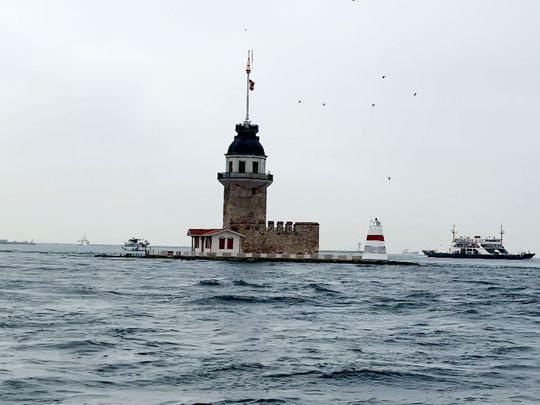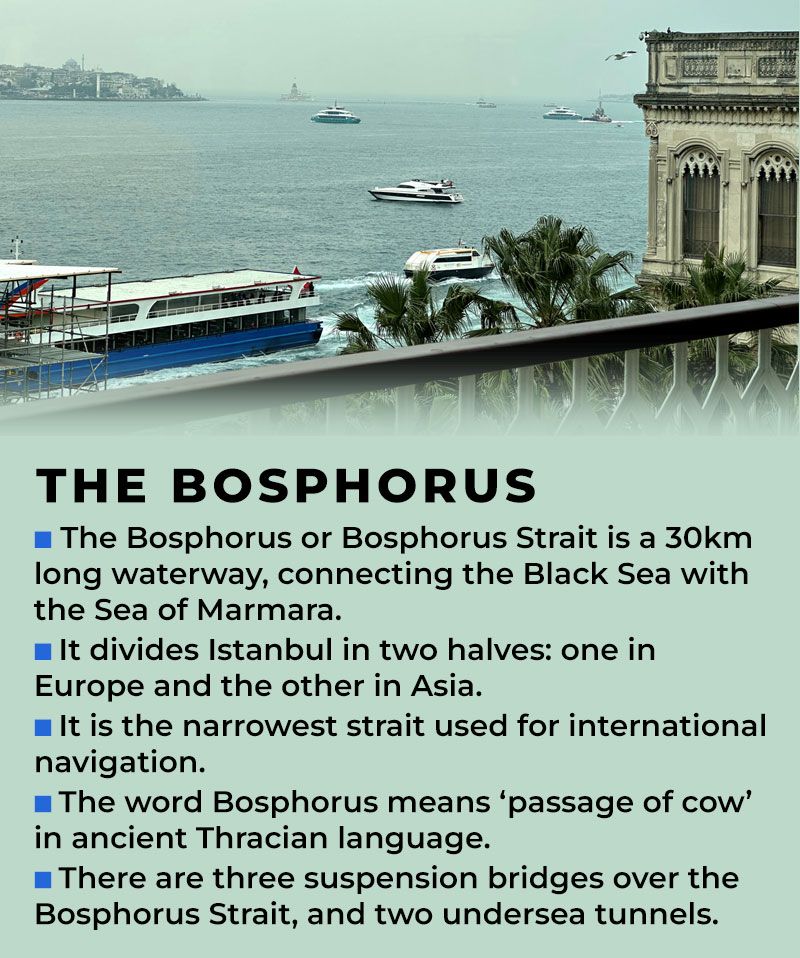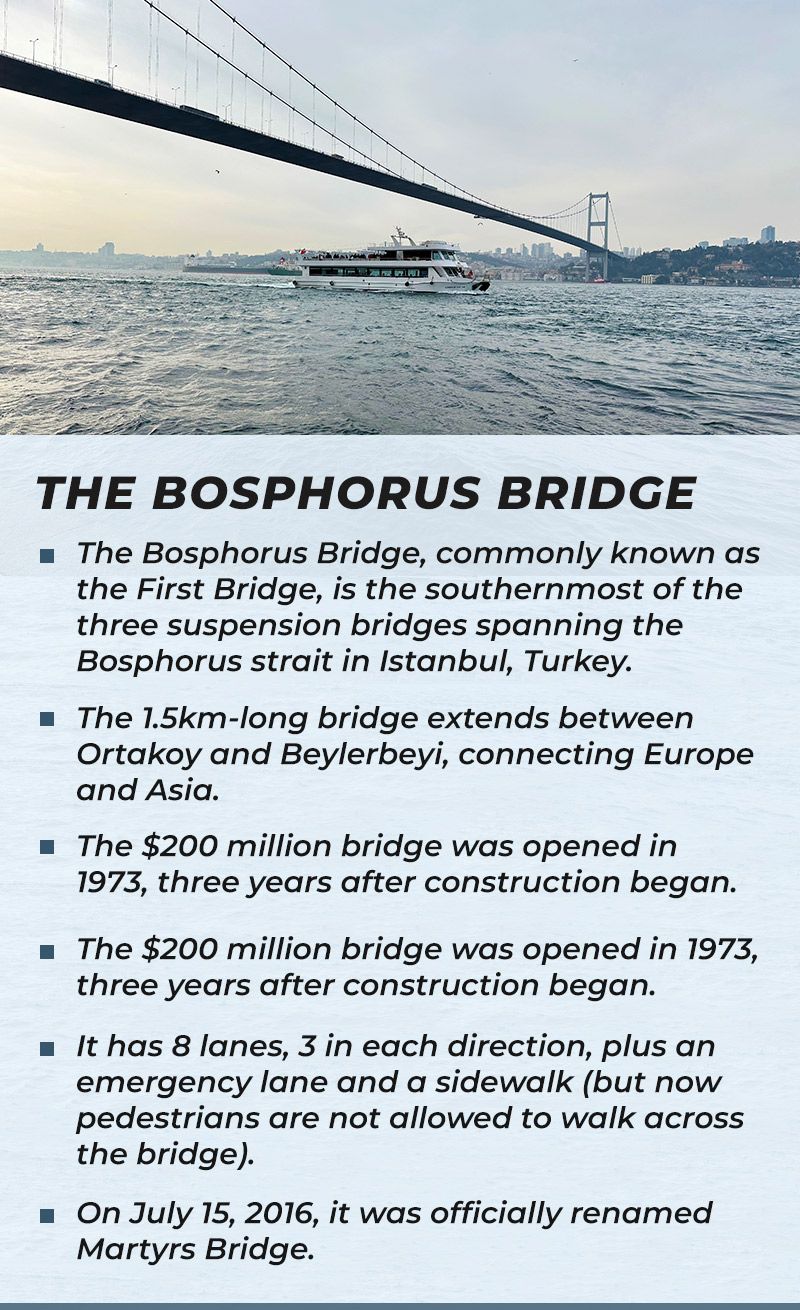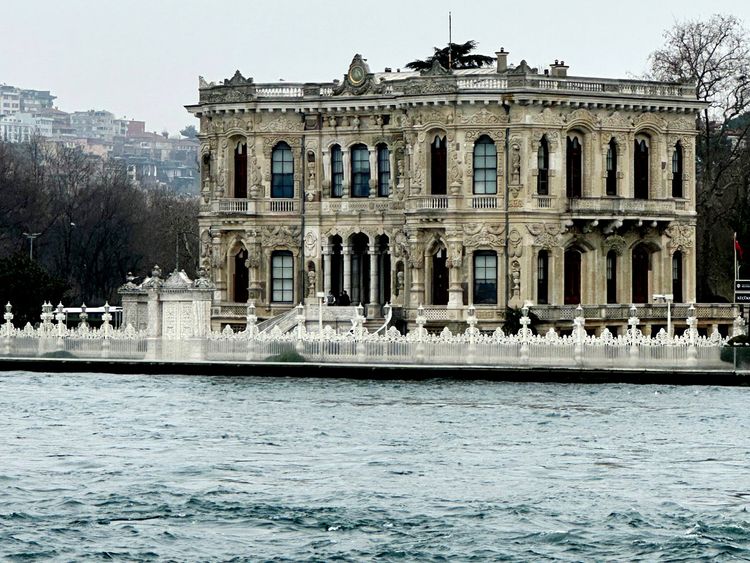
The Uskudar Pier in Istanbul was deserted. Not without reason. Mist had enveloped the Bosphorus Sea, and visibility was poor when I left the Address Istanbul. Chilly winds buffeted me as I wended my way to the pier, stopping only to admire the tulips at a florist.
It was still a dank and dark morning when I boarded the Kareem Denizcilik. Around 9am, the mist had started to lift as the craft revved away into the distance with the sights of Istanbul coming into view. Small boats bobbed in the waters while cruise boats, ferries, tankers and fishing vessels passed us on the Bosphorus, the sea that connects the Black Sea to the Mediterranean Sea by passing through the Marmara Sea and the Dardanelles Strait.
Watch: Istanbul landmarks from Bosphorus Sea
My fingers were freezing as I stayed outside the cabin to watch the landmarks coming up on the Asian and European coasts. Several cups of Turkish tea kept my spirits up.
Modern structures jostled with heritage buildings on the banks of the Bosphorus. We headed South towards the islet housing the Maiden’s Tower, which used to be a light tower before becoming a customs station and a monument-musuem. As the boat turned around, the Galata Tower rose in the distance, and soon the majestic Dolmabahce Mosque came into view as the boat motored North. Beside it was the Dolmabahce Palace, which reflects Ottoman, Baroque and Neoclassical styles of architecture.

As we passed the Ciragan Palace, the elegant and ornate Ortakoy Mosque, which combines Ottoman and Baroque styles, stood in stark contrast against the engineering marvel of the Bosphorus Bridge. The 1.5km bridge spans across the Strait, linking the European and Asian sides.
Across the sea, the Beylerbeyi Palace, the summer retreat of the Ottoman Sultans, peeked through the mist. Further ahead, the Rumeli Fortress and its watch towers stood proudly, echoing the military might that helped the Ottomans capture Constantinople (present-day Istanbul). The boat slipped under the Fatih Sultan Mehmet Bridge (the Second Bosphorus Bridge) before turning back to give us a glimpse of the medieval Anadolu Fortress, which tells the military history that changed the course of Bosphorus.

The impressive 19th-century Baroque-style Kucuksu Pavilion, National Painting Museum, Four Seasons Hotel, and many mansions, including the Edip Efendi Yalisi, whizzed past as the yacht headed to the Ciragan Palace Kempinski Hotel.
After a two-hour ride, we disembarked from the yacht at the Ciragan Palace, which evokes the opulence of the Ottoman era. The palace, now owned by the Kempinski Hotels chain, is among the 15 most expensive hotels in the world.
It was indeed a fitting destination after a cruise on the Bosphorus.










